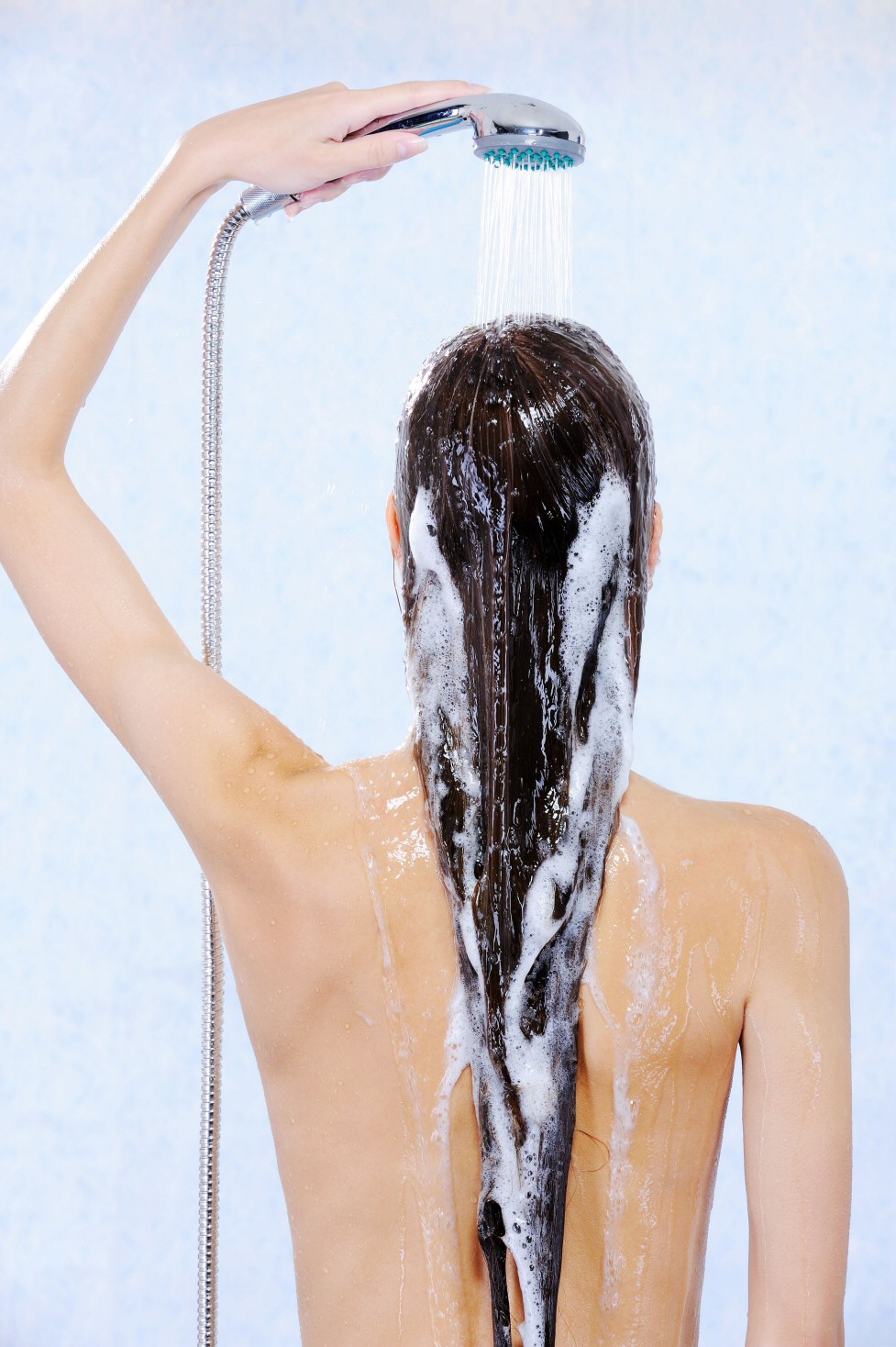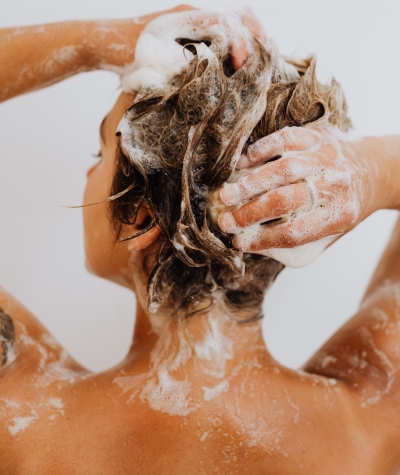in this page:
How do shampoos work?
Some of us wash our hair every single day, others of us less frequently, but how much do we know about what exactly happens when we use shampoo? Do we know, for instance, what a shampoo is designed to do?
Shampoos are designed to clean and condition your hair. Simply removing all of the dirt or soil from your hair is not enough for today's consumer. So let's look at the challenge that faces the shampoo.
 There are between 100,000 and 150,000 hairs on a typical head which can be of various lengths, shapes and styles. This large mass of fibres serves to catch soil from the atmosphere and the workplace. Added to this is sebum, the natural oil that is released onto the hair at its base from the sebaceous gland of each follicle. As people wash their hair frequently sebum rarely coats the whole length of the hair fibres. In addition, hair sprays, mousses, gels etc. need to be removed from the hair to leave it clean and ready for re-styling. The main aim of the shampoo is to remove dirt and soil and then condition your hair. This is usually achieved by building the shampoo from two distinct types of ingredients. The first are surfactants that are designed to clean the hair. Here it is important to achieve a balance between mildness and cleaning. The second group is conditioning agents that leave the hair easy to manage and prevent "fly-away" or static. These have to be deposited onto the hair during the shampooing process ie. while cleaning the hair. Also, they must be deposited at a level that leaves the hair manageable and feeling clean.
There are between 100,000 and 150,000 hairs on a typical head which can be of various lengths, shapes and styles. This large mass of fibres serves to catch soil from the atmosphere and the workplace. Added to this is sebum, the natural oil that is released onto the hair at its base from the sebaceous gland of each follicle. As people wash their hair frequently sebum rarely coats the whole length of the hair fibres. In addition, hair sprays, mousses, gels etc. need to be removed from the hair to leave it clean and ready for re-styling. The main aim of the shampoo is to remove dirt and soil and then condition your hair. This is usually achieved by building the shampoo from two distinct types of ingredients. The first are surfactants that are designed to clean the hair. Here it is important to achieve a balance between mildness and cleaning. The second group is conditioning agents that leave the hair easy to manage and prevent "fly-away" or static. These have to be deposited onto the hair during the shampooing process ie. while cleaning the hair. Also, they must be deposited at a level that leaves the hair manageable and feeling clean.
How do the ingredients work?
The main ingredients are a blend of surfactants. It is unusual for a shampoo to contain just one surfactant. Some are designed to improve cleaning whilst others improve lather and rinsing performance. All are chosen to be mild and not irritating to the eyes. Surfactants work by reducing the surface tension between water and the soil so that it can be "wrapped up" and lifted from the hair. Surfactant molecules contain two distinct parts. First a polar head group that is attracted to water (hydrophilic) and second a fatty chain (lipophilic) that is attracted to the soil. The fatty chains line up around the soil particle with the polar head groups attracted to the water. As the surfactant molecules surround the soil particle they eventually lift it away from the hair and disperse it in the water.
Conditioning ingredients: These normally include silicones and fatty alcohols. Silicones are well known for their lubricious properties and make the hair easier to detangle. They come in a wide range of viscosities from thinner than water through to thick fluids, depending on the hair type and whether it has been treated with perms or colours. Fatty alcohols give condition and help to control static or "fly-away". Conditioning ingredients in shampoos are often uncharged, unlike hair conditioning products. This is because the positive charge on many molecules used in conditioners would interact with the negative charge on the surfactants. You would end up with a product that could neither clean nor condition.
Functional ingredients: There is little point making a perfect shampoo if when you pour it into your hand it simply runs through your fingers! All products, including shampoos, require ingredients to control their viscosity or thickness. Shampoos also require ingredients to determine how the lather forms and rinses away. Added to these are preservatives to prevent microbial growth.
The shampoo may also contain additional ingredients for hair protection and strength. When exposed to the sun the hair, which has no natural means of repair, is partly protected by the addition of sunscreens to the product.
Aesthetic ingredients: Besides colour and pearlising agents to improve the appearance of the product, perfumes are also added. These go beyond just "nice smells". They create an holistic in-use experience that plays to other senses to make the shampooing process a pleasant and desirable experience.
New innovations
The biggest innovation of the last 20 years is the invention of true 2 in 1 shampoos that give the full cleaning and conditioning of a separate shampoo and conditioner product. These have been so successful in addressing the needs of the consumer that virtually every modern shampoo now contains a large element of conditioning. The original 2 in 1's were formulated using high viscosity silicones as the conditioning ingredients. These have now been surpassed with improved silicones and the addition of fatty alcohols.
The shampoos are formulated for a wide range of hair types which each have their own needs. For example, normal hair requires cleaning and control. In contrast, coloured hair has higher conditioning needs. During colouring a very special fatty acid is removed from the hair surface. The hair is made more hydrophilic and contains more negative charges causing more static. Therefore, coloured or chemically treated hair will need specially formulated shampoos that contain conditioning ingredients chosen to deposit on this more hydrophilic hair.
As we continue to unravel the specific needs of each hair type and style we will improve our selection of both surfactants and conditioning ingredients to make sure that the consumer gets the look they desire every time they wash their hair.

